 |
 |
 |
| |
New York State AIDS Institute Initiatives to Improve Care For Older People With HIV and Long-Term Survivors: An Example of a Government-Academic-Community Partnership
|
| |
| |
"Government agencies can and must promote quality care for OPH and LTS by partnering with consumers and providers."
People Aging with HIV Activities and Initiatives New York State AIDS Institute
Aging Workshop Oct 14-15 2022
Reported by Jules Levin
Siegler E1, Belanger D2, Hartigan J2, Steinbock C2, Wikiera J3, Gonzalez C2
1Weill Cornell Medicine, New York, United States, 2New York State Department of Health AIDS Institute, New York, United States, 3New York State Quality of Care Consumer Advisory Committee, Syracuse, United States
Background: The New York State Department of Health AIDS Institute (AI), founded in 1983, has always included improving health and wellbeing of persons living with HIV in its mission. Nearly 1% of New Yorkers 55 years and older have HIV. Of those with HIV, 60% are at least 50 years of age and more than one quarter are at least 60. There are more than 2400 people who were perinatally diagnosed with HIV in NYS, and most of these people are now adults. To respond to this need, the AI has created a multifaceted HIV and Aging program.
Methods: The AI Consumer Advisory and Clinical Quality Advisory Committees created a joint consumer/provider subcommittee on HIV and Aging, Long Term Survivors, and Perinatally Diagnosed (HALP) in 2020; this subcommittee, which has encouraged expansion of the AI’s activities to directly address needs of older people with HIV (OPH) and LTS, held town halls and promoted a Syracuse University-sponsored statewide survey of barriers and recommendations to quality care.
Results: The New York State AIDS Institute has responded to demographic changes by initiating a number of programs:
• Its Clinical Guidelines Program has published a Guidance for Addressing the Needs of Older Patients in HIV Care.
• It has approved a functional screening tool modified from the WHO ICOPE model and is assisting sites in piloting the tool, with plan for statewide dissemination and implementation.
• Its Certified Peer Worker training program is committed to training peer workers on the use of the screen.
• It is funding a $4 million statewide People Aging with HIV (PAWH) RFP to create HIV-Aging programs that focus on community linkages and use of certified peer workers. This RFP is designed to ensure each region of the state is engaged.
• It has established a new Project Director of HIV and Aging (within the Bureau of Community Support Services) to oversee the PAWH initiative, foster coordination around all HIV and Aging activities across the AIDS Institute, and facilitate collaboration with non-NYS DOH entities (i.e., New York City Department of Health and Mental Hygiene, NYC Ryan White Planning Council, and New York State Office for the Aging) to streamline and support communication statewide.
• Its Center for Quality Improvement and Innovation has been competitively funded by the Federal Health Resources and Services Administration (HRSA) to create the aging+hiv Initiative, which will support a national learning collaborative with 10 demonstration sites and disseminate resources to the larger Ryan White community.
Conclusions: Government agencies can and must promote quality care for OPH and LTS by partnering with consumers and providers. Agencies have the resources and authority to ensure that programs of all sizes and regions can participate, and that that all consumers can benefit from these quality-of-care initiatives. The NYS AIDS Institute has established both intra- and extramural initiatives that can promote highest quality of care throughout the state and disseminate best practices across the country.
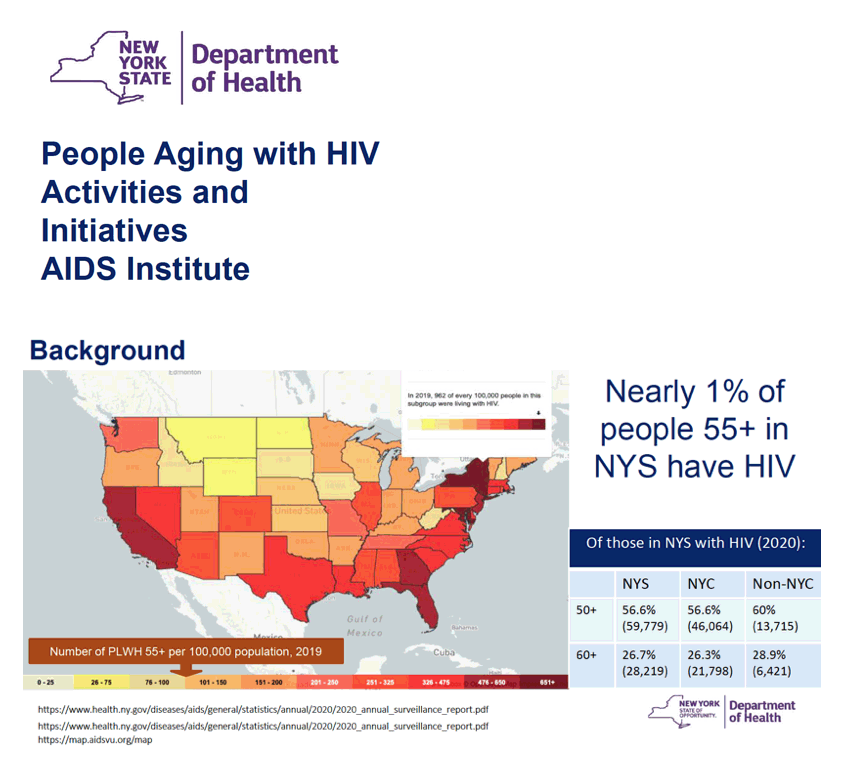
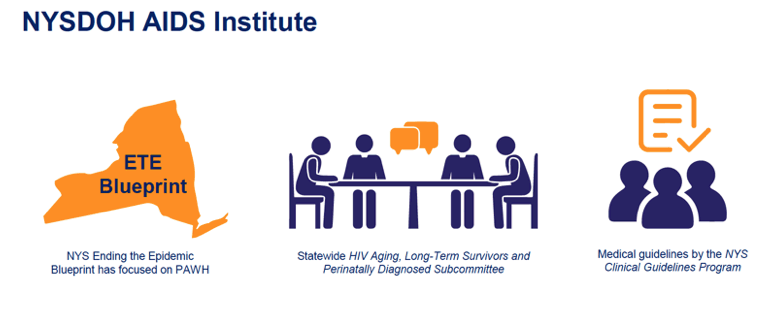
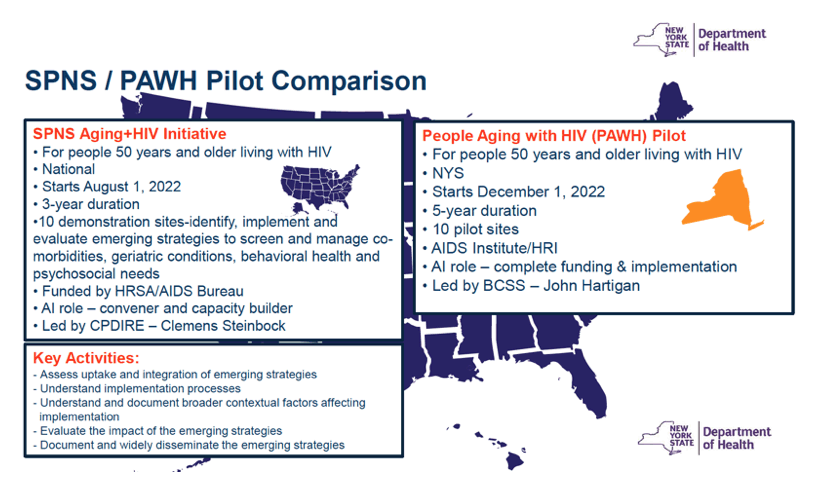
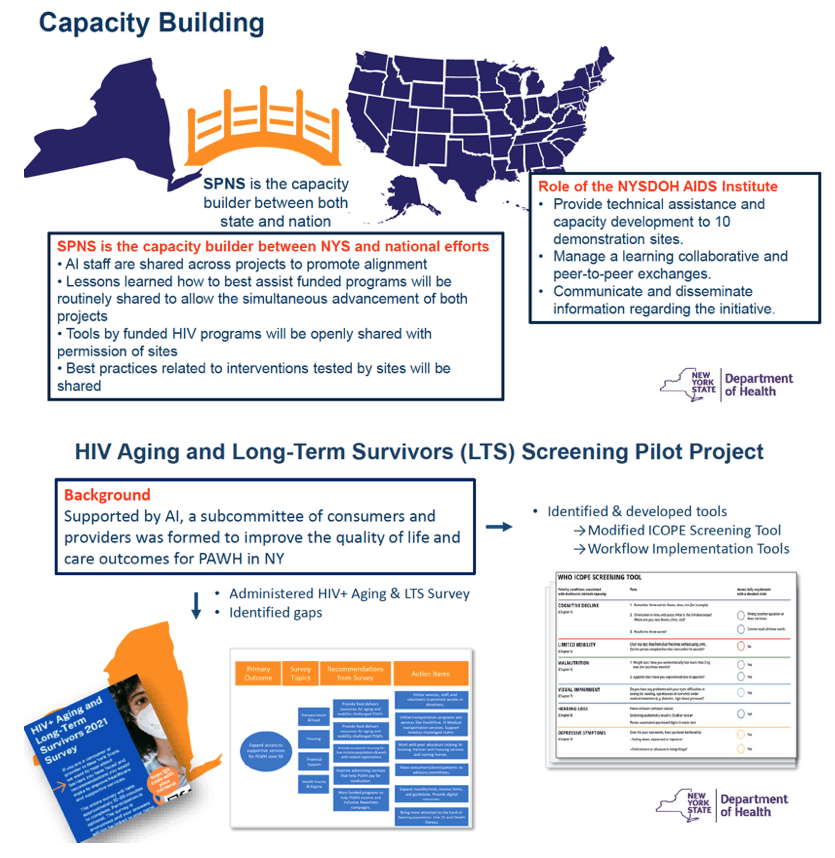
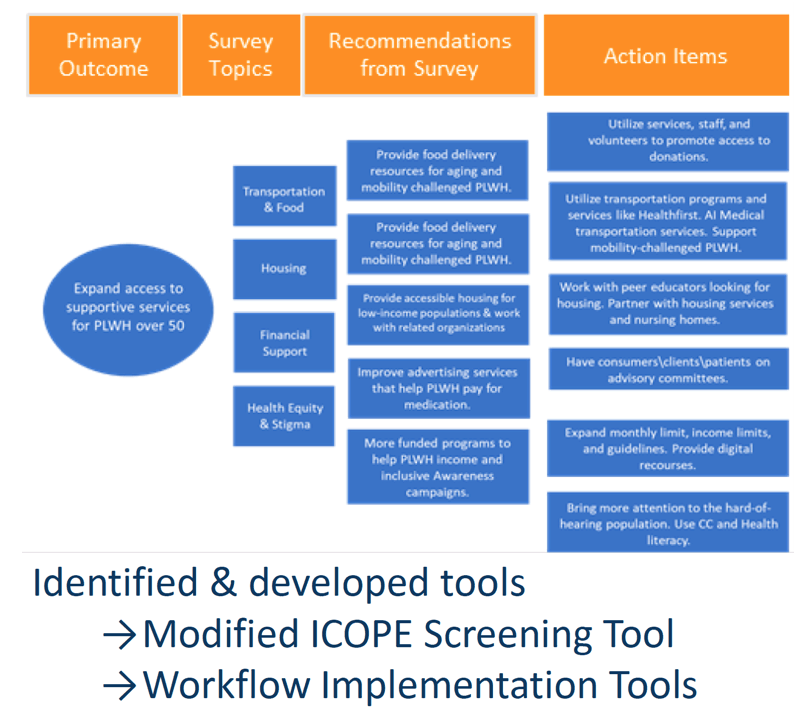
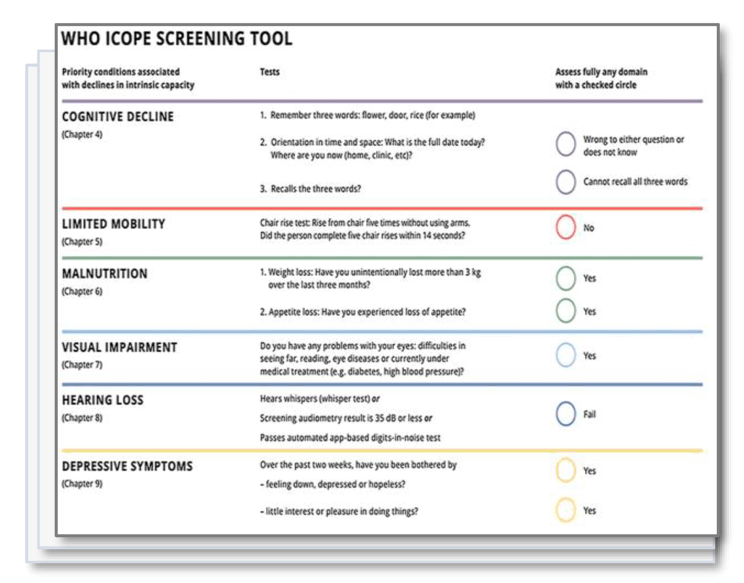
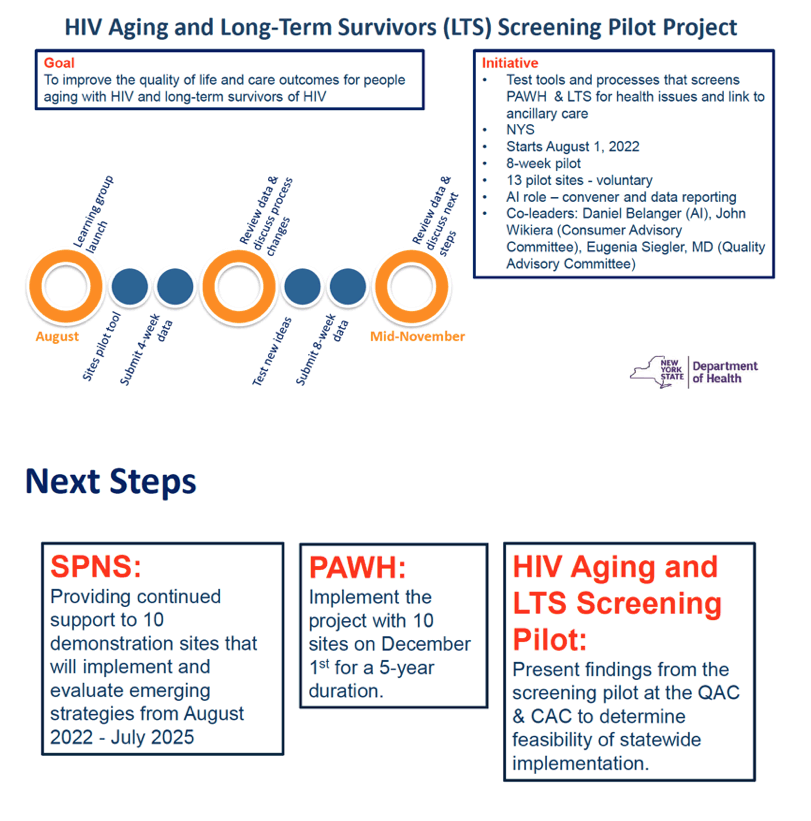
|
| |
|
 |
 |
|
|